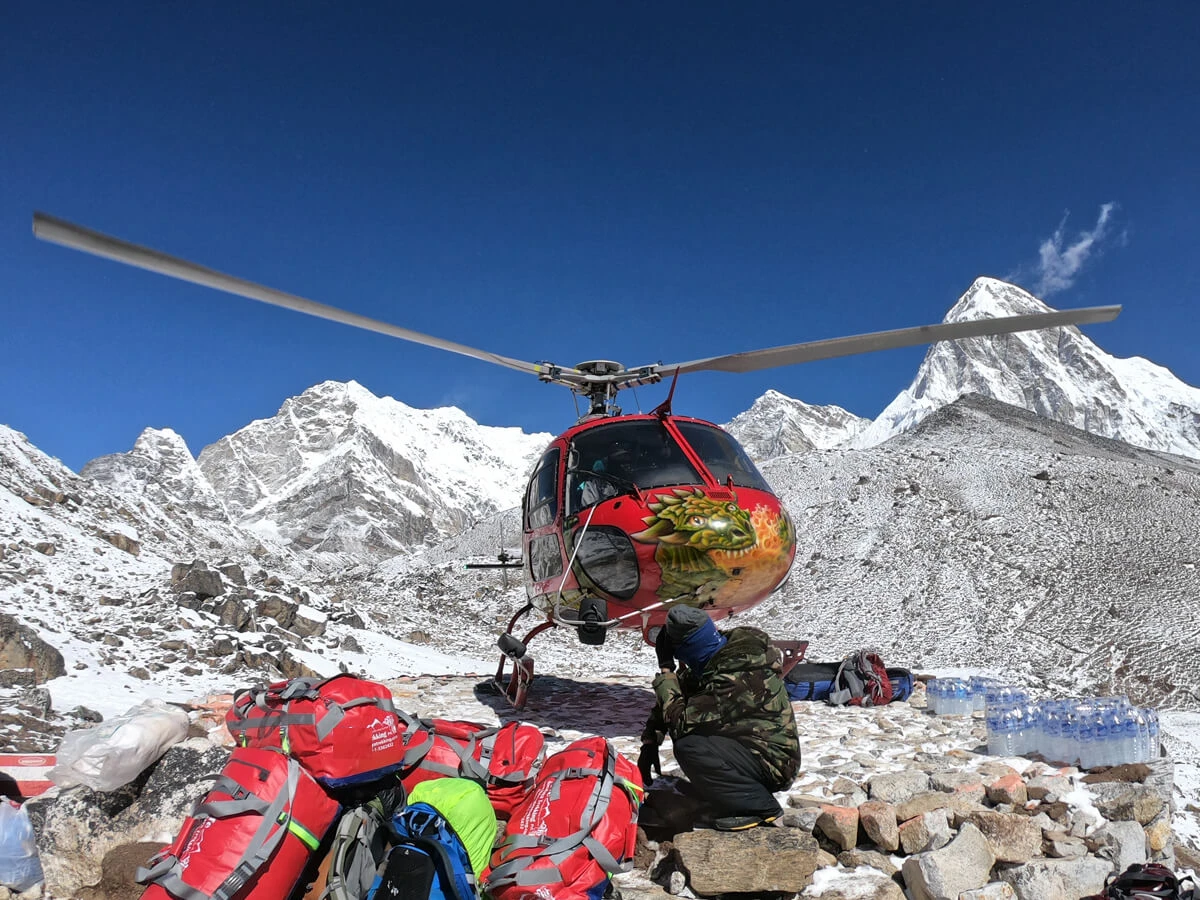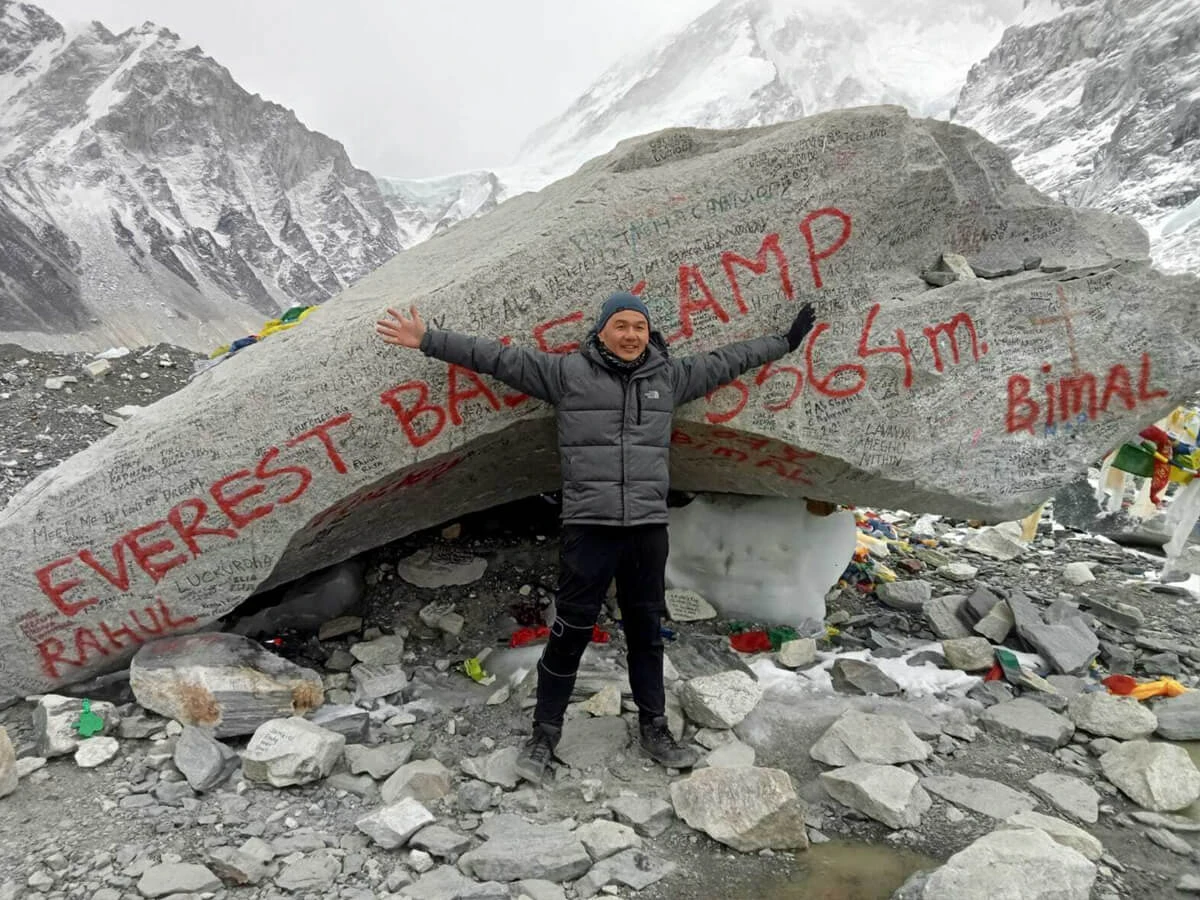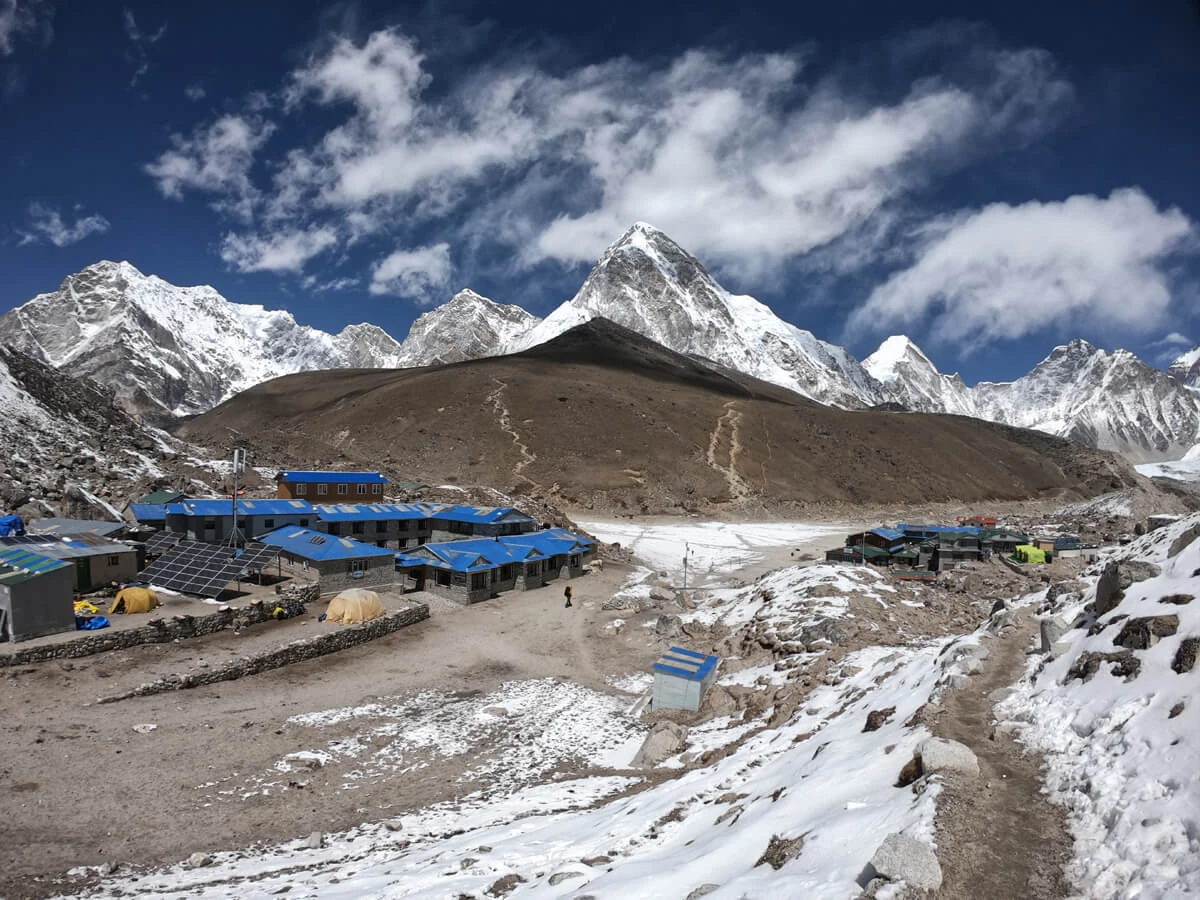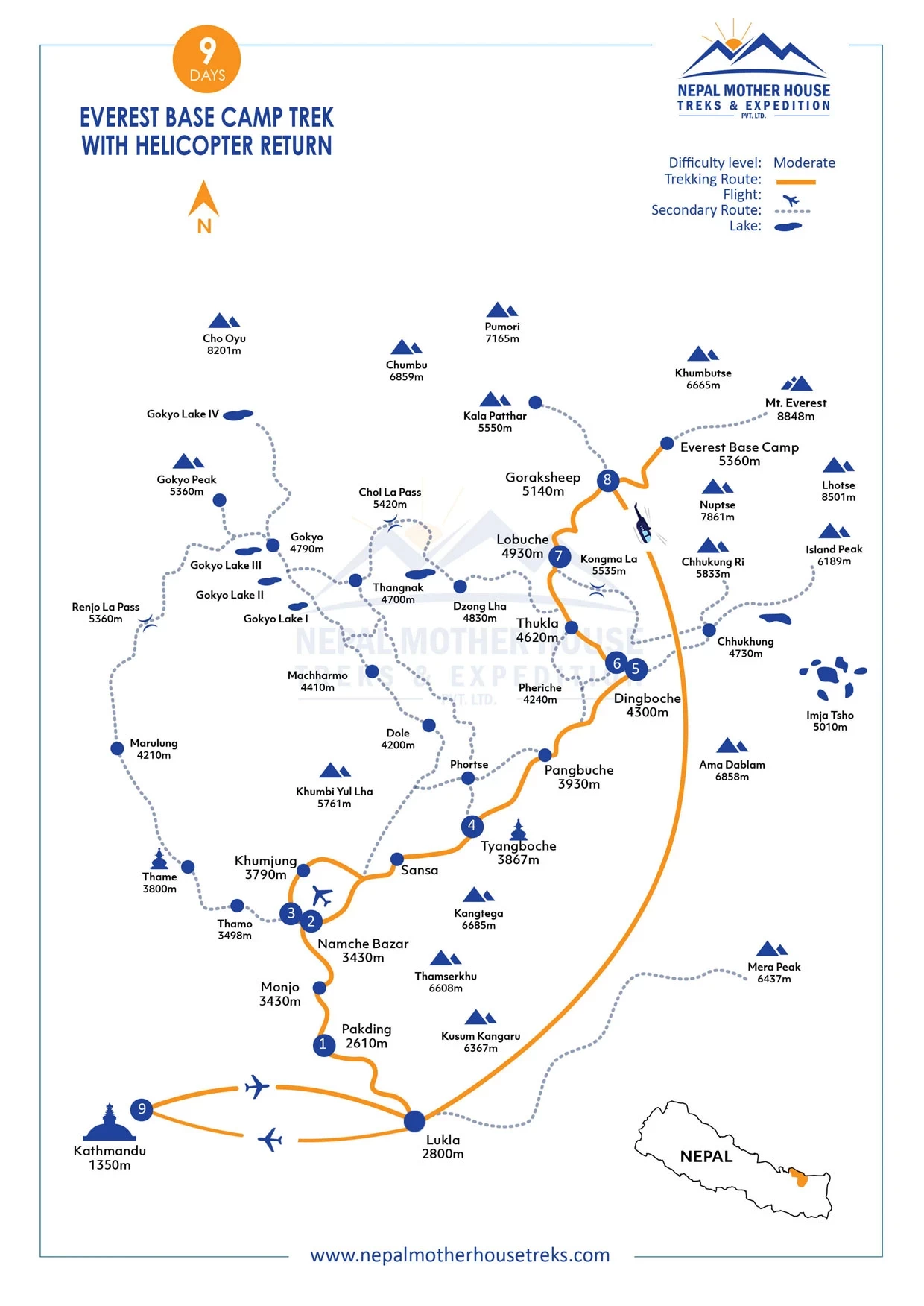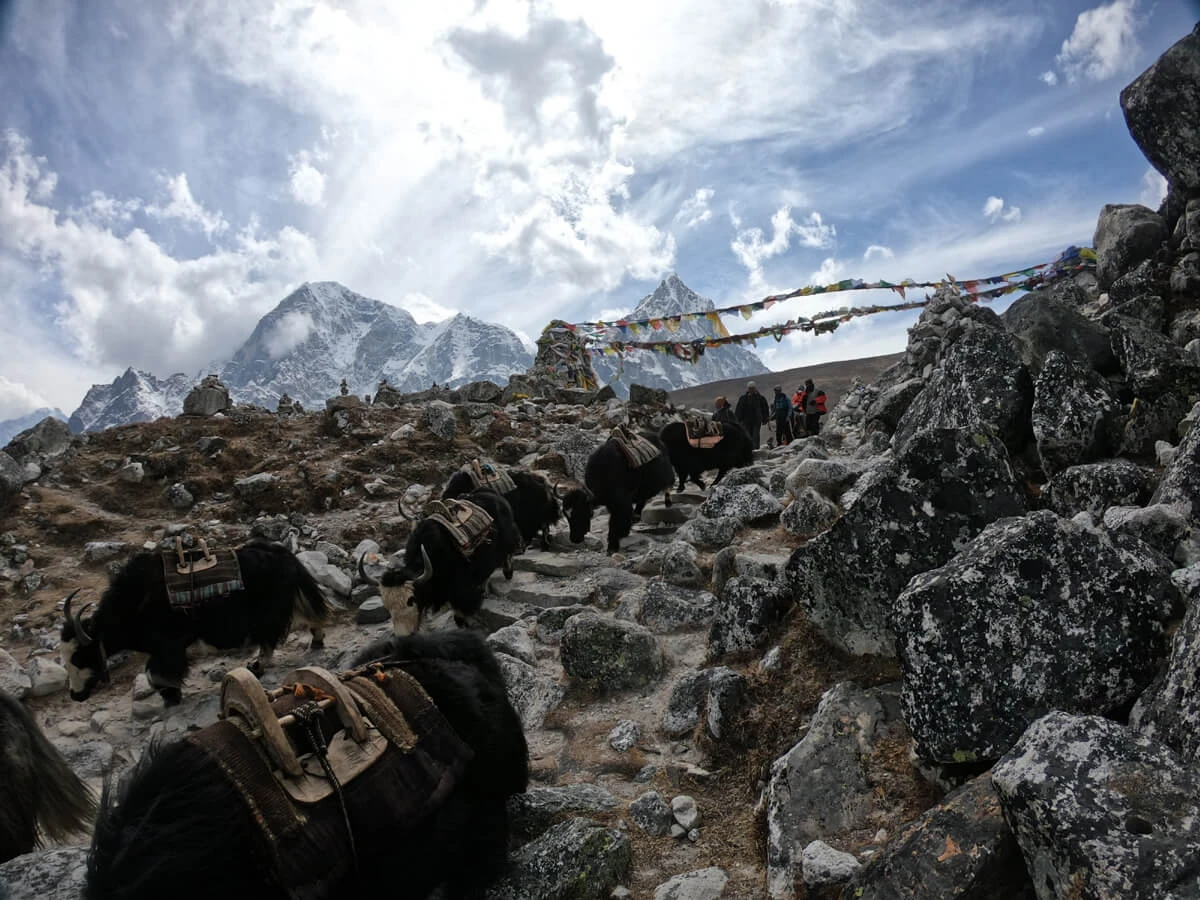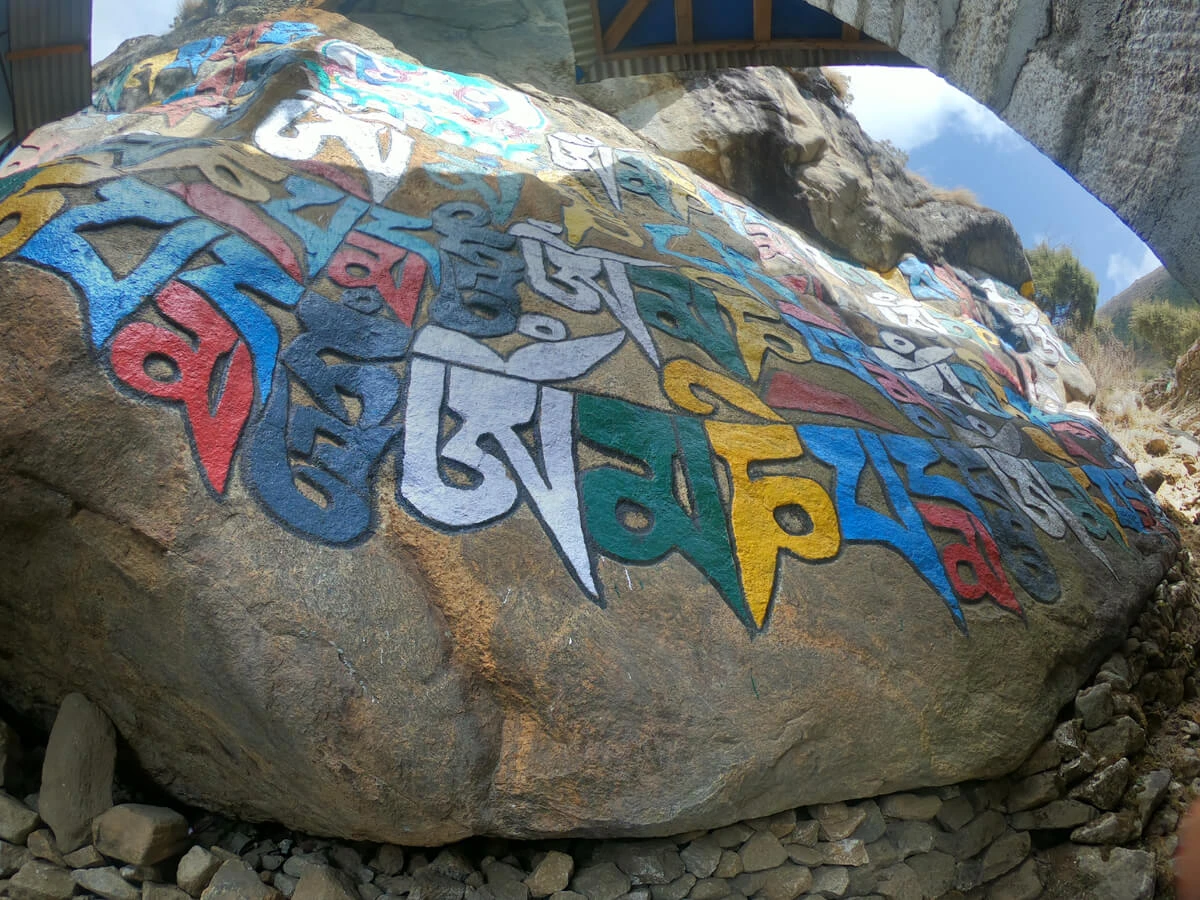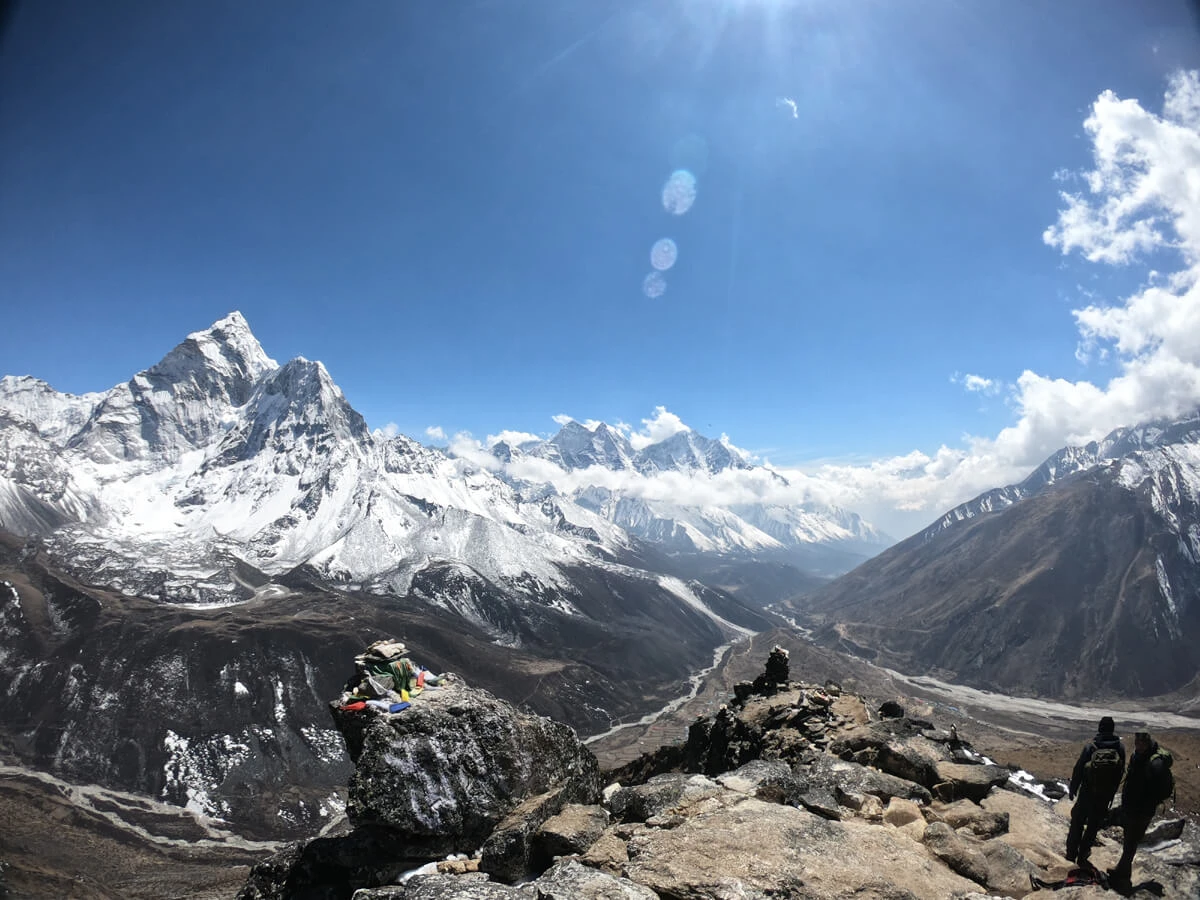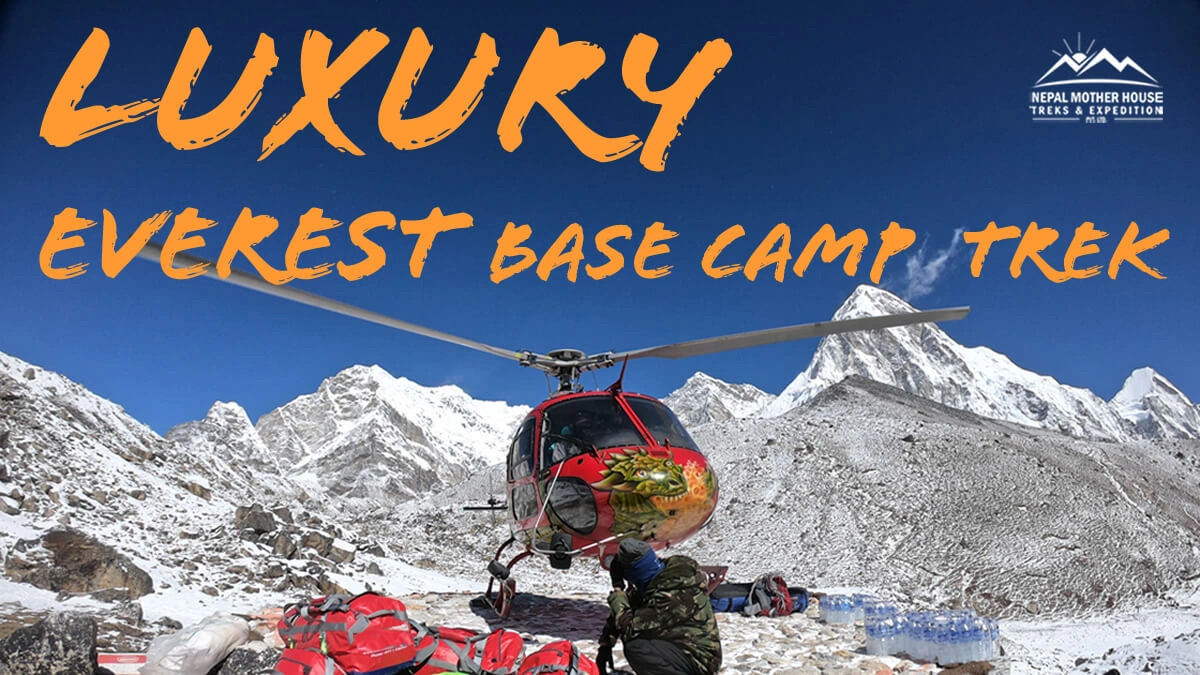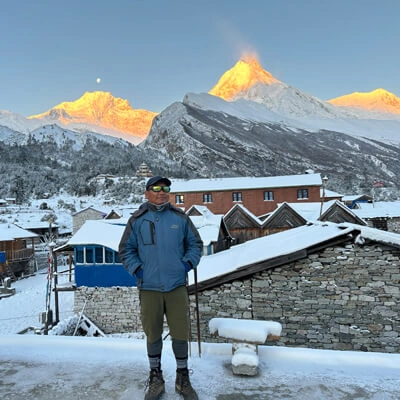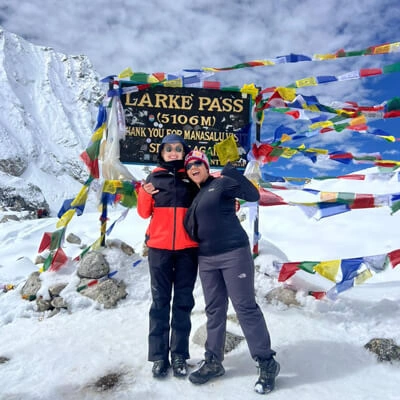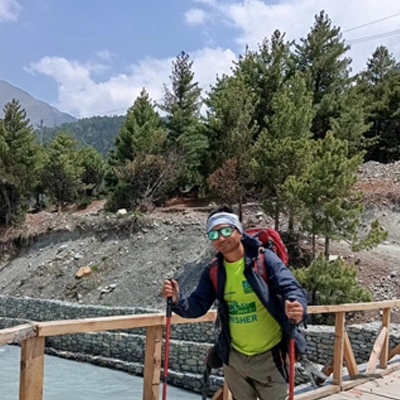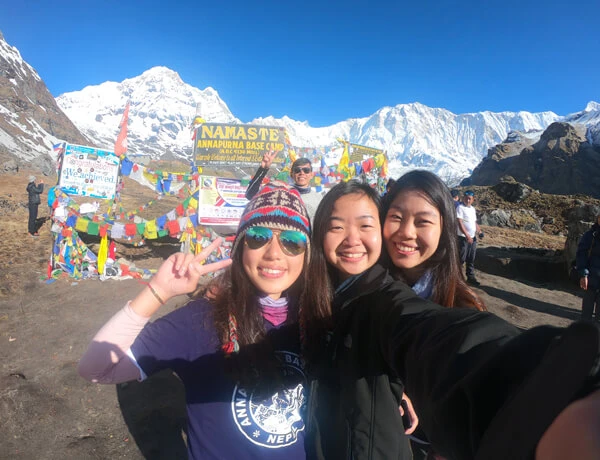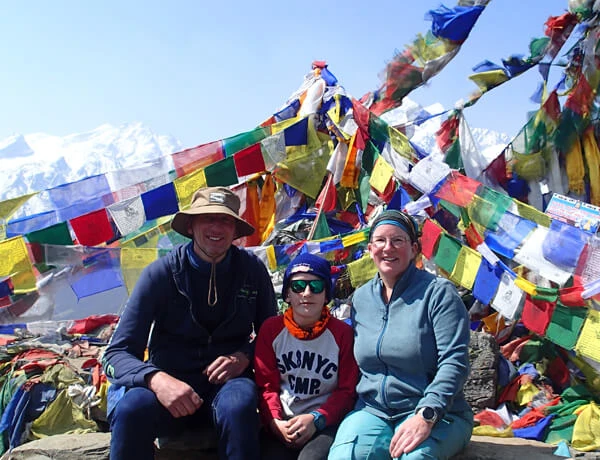Everest Base Camp Trek with Helicopter Return is the perfect combination of an adventure experience to Everest and an enjoyable, luxurious heli ride in the heart of Khumbu Himalaya. Trekkers who have long dreamed of visiting the Base Camp of the Top of the World, "Mt. Everest (8,848.86 m)," but lack the time to hike, can now fulfill their dream! We are here to provide you with access to Everest Base Camp within your limited time, enabling you to fulfill your dream. You only need to be passionate about doing it and physically fit.
Everest Base Camp Trek with Helicopter Return starts from Lukla after a scenic short regular flight from the capital city of Kathmandu. Then start to walk to the dream destination, following the Dudhakoshi River bank across several suspension bridges and Buddhist wall paintings, and through the Sherpa settlement; Phakding, Manjo. Now, as you enter the Sagarmatha National Park, you will ascend from the cool temperate vegetation zone to the subalpine vegetation, taking in the stunning scenery of the mountains before arriving at Namche Bazaar. Every Saturday market at Namche recalls ancient trading transit points between Tibet and Nepal. The panoramic view includes Mt. Everest (8,848.86 m) and other mountains: Kwangde (6,168 m), Tawache (6,542 m), Nuptse (7,861 m), Lhotse (8,516 m), Amadablam (6,812 m), Kangtega (6,782 m), Thamserku (6,623 m), and Kusumkangaru (6,367 m). Namche, Syngbuche, Khumjung village, and Everest View Hotel are outstanding viewpoints for thrilling scenery. Tengboche is the best place to stay, where the huge Buddhist monastery and pointed view of Amadablam lured the trekkers.
The Everest Base Camp Trek Return by Helicopter goes inside the Sagarmatha National Park with a subalpine jungle, where you can see Himalayan Goats (Jharal/Thar) and the endangered species Musk Deer while walking. This is the inhabitant of Snow Leopard and the playground of the mysterious creature Yeti. The people of Khumbu practice Bonpo Buddhism, following traditional faith and beliefs to protect their culture from influence from outside culture. As a unique culture of the Sherpa people, there is some evidence of a polyandry marriage system at Upper Pangbuche and other villages. Finally, you will reach your dream destination, "Mt. Everest Base Camp (5,360 m)," via Dingboche, Lobuche, and Gorak Shep. Khumbu Glacier, Icefall, Lakes, Glacial Moraine, and surrounding peaks, including the Top of the World "Mt. Everest," bring your dream to life.
After spending some time observing the base camp, you will return to Gorakshep for the wonderful helicopter flight to Lukla, reminding you of your footprint from an aerial view. This trip aims to provide a distinctive experience for mountain lovers, and it includes a regular trekking route to Everest Base Camp, an exciting Heli tour, and a regular airplane flight to Kathmandu. There are several side trips from different places, like Dingboche to Chhukung, Island Peak, and Nagkar Tshang Peak (5,615 m), and Gorak Shep to the most popular viewpoint, Kalapathar (5,555 m). EBC Trekking back by helicopter puts your energy into an unforgettable experience in your lifetime. This trip is suitable for married couples for their Honeymoon celebration at the highest place in the world. We at Nepal Mother House are pleased to arrange your Everest Base Camp Trek and Helicopter Return, tailored to your schedule and requirements, with the assistance of expert local Sherpa Guides and porters. Would you like to embark on this remarkable journey to the top of the world with us?
What is the difficulty level of the Everest Base Camp Helicopter Trek?
Everest Base Camp Trek with Helicopter Return difficulty level can be different depending on various factors, such as your physical fitness, altitude acclimatization, following days' weather conditions, and your previous trekking experience. Normally, the Everest Base Camp Trek Helicopter Return is known as a less physically challenging trek compared to the traditional Everest Base Camp trek, which spends the most time at higher altitudes. The difficulty level of this trek is considered moderate; one needs to walk 4 to 5 hours every day above the three thousand meters of elevation most of the day.
Altitude Sickness Awareness on Everest Base Camp Trek with Helicopter Return
Normally, the Everest Base Camp Trek with Helicopter Return starts flying from the capital city Kathmandu to Lukla, a gateway to the top of the world in the Everest region, and then walks through the most popular Sherpa villages, including Namche Bazaar, Tengboche Monastery, Dingbuche, and Everest Base Camp itself. This is the most significant trek visit in the history of the world in a short time; however, the high altitude challenges come along with it.
Even though Everest Base Camp flies you back by helicopter, you still need to trek at high altitudes above 3,000 meters, where altitude sickness can become a concern at any time. So, you need to be well acclimatized to your body before getting to your destination, and there must be a gradual ascent, rest, and staying hydrated to minimize the risk of altitude issues. Before embarking on any high-altitude trek, such as the EBC Helicopter Trek, it's advisable to consult a doctor, especially if you have pre-existing health conditions.
If you're not sure about your health and fitness level to match the difficulty level of the trek that you have been planning, you need to consult with a reputable trekking company in Nepal that will provide guidance and support for a safe and enjoyable journey.
How do you get yourself ready for the Everest Base Camp Helicopter Trek?
The EBC helicopter trek is generally considered to be of moderate difficulty; however, it is essential to be well-prepared physically and mentally. Do regular exercise and cardiovascular training that will help improve your fitness level and make the trek more enjoyable. For this, do yoga, gem, and jugging every day and go hiking every weekend. Furthermore, be mentally prepared for changing weather conditions, basic accommodations, and food during the trek at high altitudes.
If you do not have previous trekking experience, it might be helpful to participate in some warm-up hikes in your hometown or be involved in regular aerobic workouts to build your stamina before the Everest Base Camp Trek Return by Helicopter.
Likewise, make sure that your passport is valid for more than six months and check your physical health with your doctor. Prepare warm enough trekking gear, including comfort trekking boats, sleeping bags, down jackets, and hiking bags.
Some Tips for a Safe Everest Base Camp Trek with Helicopter Return
This is a once-in-a-lifetime experience: Everest Base Camp Trek and Return by Helicopter, although it's important to prioritize safety every time due to the adventure journey at high elevation. You must have proper meals every day, enough sleep, keep your body dehydrated, avoid smoking and alcoholic drinks, and make sure you have the right equipment. Similarly, if the weather delays the Lukla to Kathmandu flight, it's advisable to factor in additional days to return to Kathmandu. Tips for the Everest Base Camp Trek will be helpful for you to complete the trek without difficulties.
Likewise, if this trip is not suitable for you, then we will design a 14-day Everest Base Camp Trek by Road without a Lukla flight. This will save you a huge amount of money and help you complete the journey successfully.
